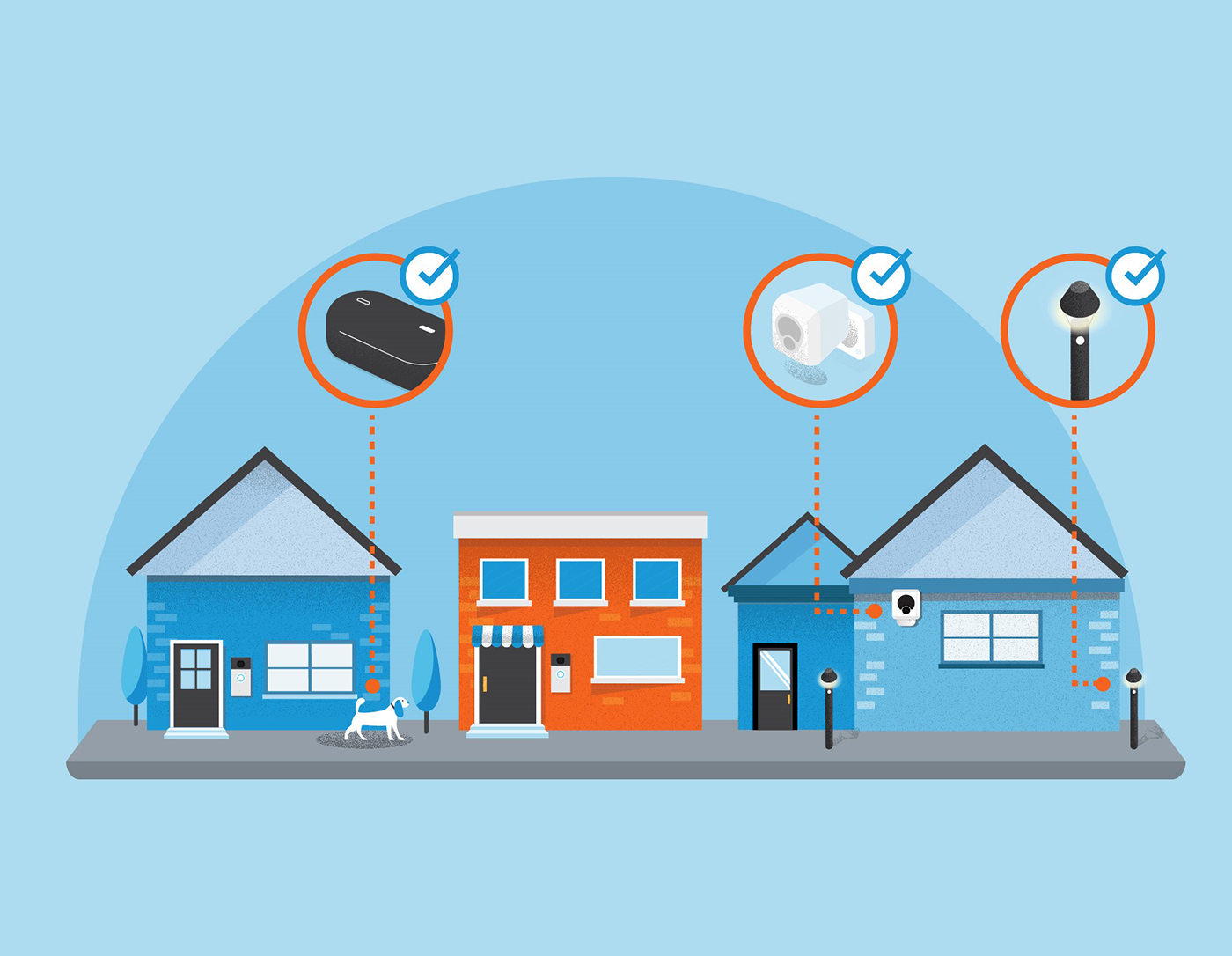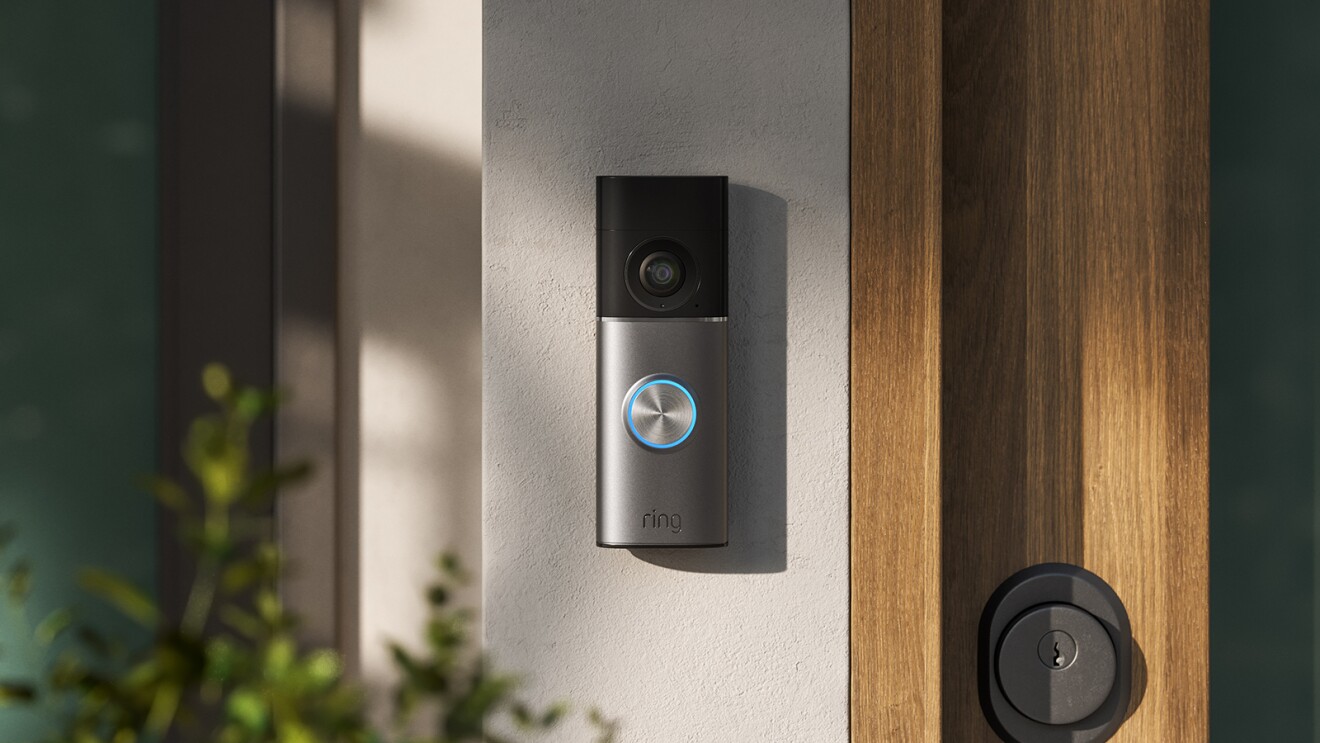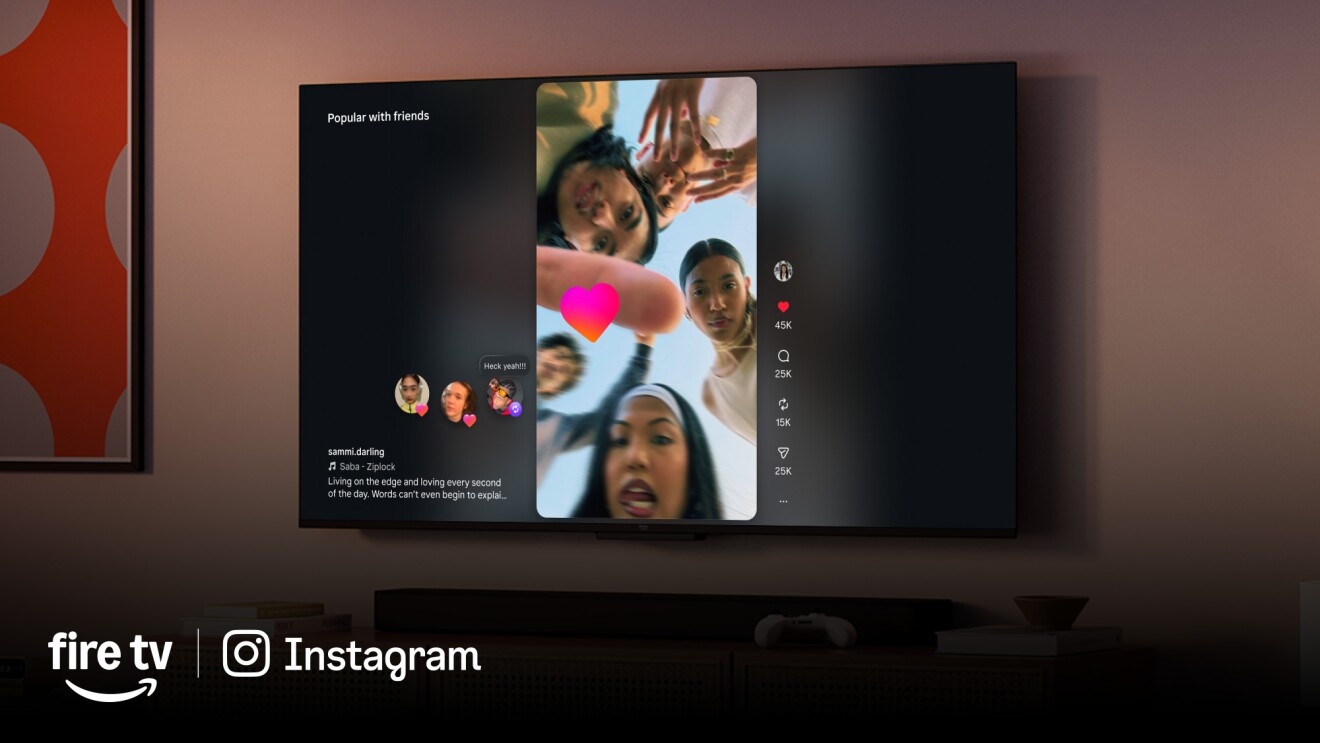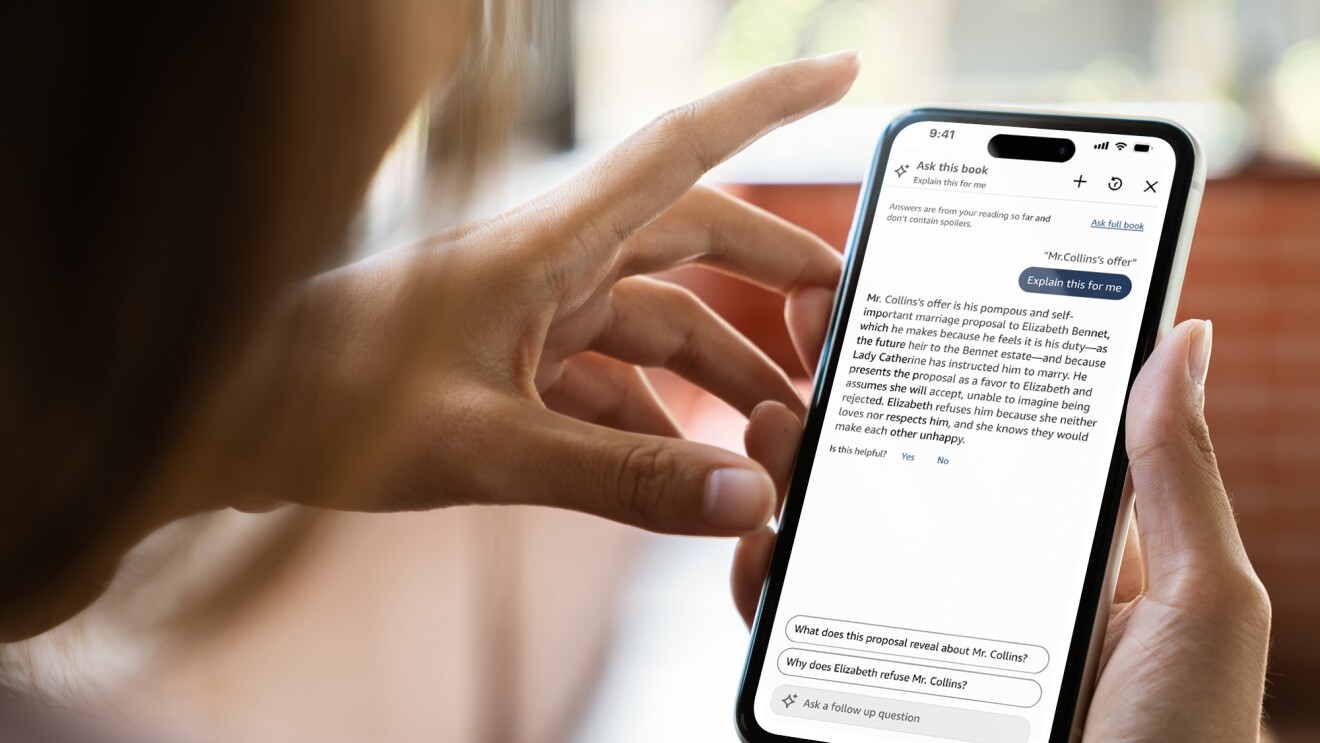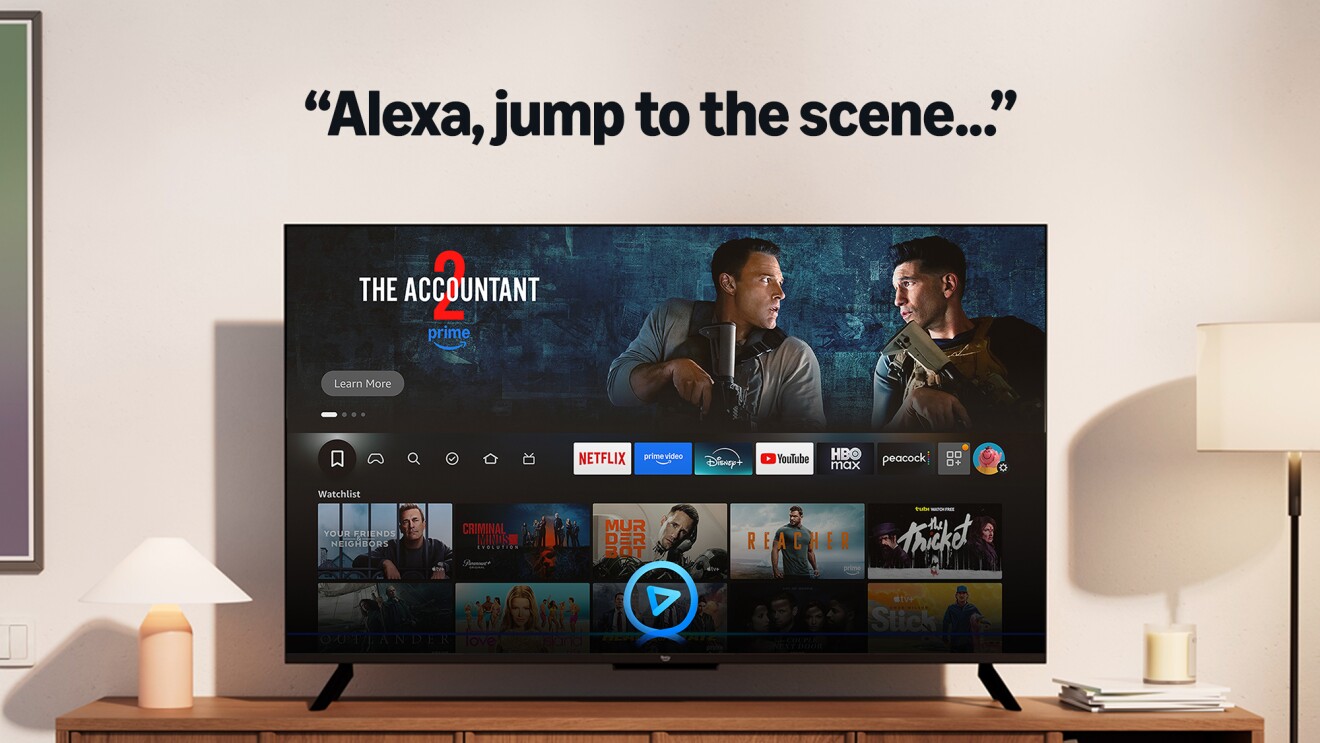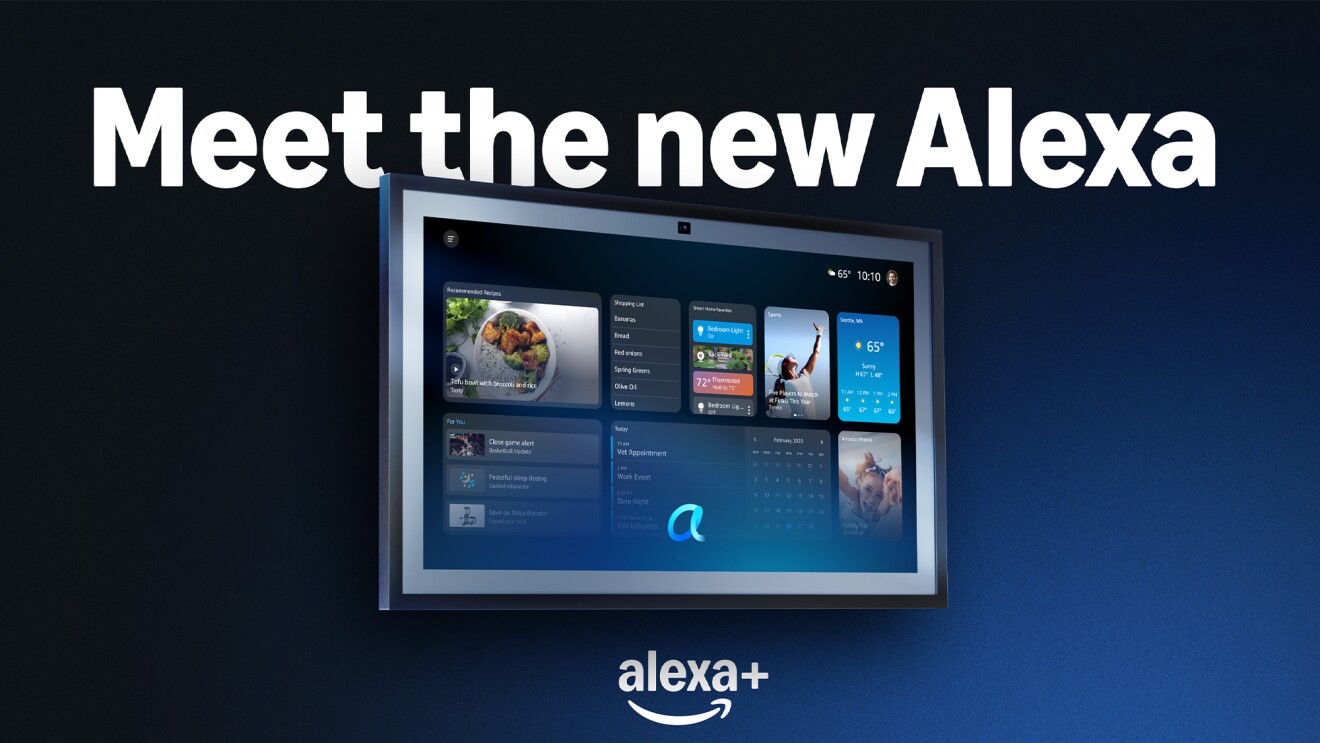Connectivity on our devices shouldn’t be limited to our homes, offices, or mobile phones. This is why we launched Amazon Sidewalk—to help your devices stay connected whether you’re home, out in the yard, or across town. We believe device makers will play an important role in keeping your devices better connected with Sidewalk, which is why we’re pleased to be working with CareBand to explore how Sidewalk can help people living with dementia and with Life360 to help families stay safe and connected.
How growing up in a family of doctors inspired CareBand founder Adam Sobol
A young man takes his grandmother to lunch, steps away from the table for a moment, and returns to find that she has disappeared. A woman wakes up at night to discover that her husband is not in bed, in the house, or in the neighborhood. A person walks to work, only to find that the building has been torn down and the company went out of business decades ago—and they can’t remember how to get home.
These are common experiences for people living with dementia and their loved ones, according to CareBand founder Adam Sobol. The lone engineer in a family of doctors, Sobol grew up visiting long-term care facilities with his father, a board-certified geriatrician. He learned how important it is for people living with dementia to be at home, independent and safe. He wanted to help.
“Everyone had a story,” Sobol said. “People try to take care of their loved ones at home. Typically, wandering is one of the major triggers that pushes people over the edge from ‘I can take care of my mom’ to ‘I can’t take care of my mom.’ At that point, they look into 24/7 caregivers, assisted living, or a nursing home.”
Today, an estimated 50 million people around the world live with dementia. That number is expected to double this decade and triple by 2050. Caretaking for individuals with dementia often falls to their families and communities—sons and daughters who move in, friends who regularly stop by, and neighbors who volunteer to keep an eye out. But the support often isn’t enough.
After years of research, Sobol and his team developed CareBand, a wearable device that alerts caregivers when an at-risk individual may be wandering away or in trouble.
"Our five-year goal is to enable a million adults living with dementia to remain safely in their homes for six months longer,” Sobol said. He estimates that those six months can save up to $25,000 in long-term care fees, in addition to easing the physical and emotional strain on both people living with Alzheimer’s disease and their caregivers.
 Image courtesy of CareBand
Image courtesy of CareBandHow CareBand creates a community safety net with Amazon Sidewalk
Sobol developed CareBand in 2016. The wearable was designed to use long-range communication technologies, which is why Sobol began a proof of concept with Amazon Sidewalk. Rather than relying on a stationary WiFi router with a defined range to operate, Sidewalk creates a safe and secure way to extend connectivity beyond one’s home. It uses a tiny fraction of bandwidth from participating Echo and Ring devices in the community to create a reliable, long-range connection. When more neighbors participate, these low-bandwidth connections become even stronger—and enable devices like CareBand to work better at home and beyond.
Sobol saw the potential for emerging communication technologies and machine learning to alleviate worry among families. He also wanted to help care facilities support residents in new ways—all while respecting the dignity and independence of those with Alzheimer’s.
CareBand is the kind of inspiring solution that Manolo Arana, Director of Software Development at Amazon, envisioned for Sidewalk’s technology. He likes to compare the shared-community network to his native village in southern Spain, where residents make their own soap. “My mother would say, ‘Take this piece of soap and give it to the neighbor.’ People feel good sharing,” said Arana. “We took this concept into the digital world.”
Owners of Amazon devices won’t notice a difference in their internet speeds. Echo and Ring devices of customers who participate in Sidewalk only use up to 80 kilobits per second, which is about one-fortieth of the bandwidth used to stream a high-definition video—and a minuscule fraction of the peak download speed of a 5G connection (312 megabits per second). Amazon also caps Sidewalk bandwidth usage to preserve customers’ internet bandwidth.
When enabled by Sidewalk, CareBand wristbands will be able to connect to a digital safety net and notify family and trusted caregivers when at-risk individuals may have wandered away.
For people living with dementia, Sidewalk can help ensure the CareBand wearable device stays online in more places where the person may be, in or around their homes. Layers of encryption and security—on the CareBand device, in the cloud, and in applications—keep user information private, allowing trusted caregivers to safely access location data and see if the user has wandered and how far they are from home.
CareBand offers many innovative solutions enhanced by Sidewalk. For example, CareBand users can set up ”geofencing,” which creates dynamic virtual perimeters around real-world geographical areas and can alert users when loved ones have strayed too far. The wearable device may also provide insight into behavioral trends—such as agitation and depression—that may signal a need for more care. CareBand users are free to enable and disable each feature as needed, and Sidewalk can help ensure uninterrupted connectivity over a wider range of space than would be possible otherwise.
CareBand’s goals and forward-thinking purpose
Ultimately, Sobol hopes there will no longer be a need for safeguards like CareBand—he hopes there will be a cure for dementia. With consent from CareBand users, Sobol plans to continue the company's research with the National Institute of Aging and other leading researchers to better understand neuropsychiatric symptoms (NPS) of Alzheimer’s and related dementias with the goal to someday defeat the diseases.
Until then, Sobol and his company are advancing a broader discussion about living with dementia—and supportive technology for older adults made possible by affordable, available safety nets.
“In the future, it will be common to share bandwidth to support long-range networks like Sidewalk and provide a critical service like CareBand,” Arana said. “There are going to be more applications that we cannot even imagine today.”
 Image courtesy Life360
Image courtesy Life360Life360 and Sidewalk to deliver peace of mind for parents and caregivers
Life360 and Amazon are also teaming up on a new proof of concept to explore how Sidewalk can help customers stay safe and connected with the Jiobit Smart Tag and app. Already used by thousands of families and caregivers around the world, Jiobit by Life360 uses GPS, cellular, Wi-Fi, and Bluetooth to provide real-time location updates for Jiobit wearers like young children, elderly parents, or pets. With the addition of Amazon Sidewalk, Life360 expects to provide added range and reliability for Jiobit Smart Tags, even when other connections aren’t available.
“As the leading family safety platform, Life360 continues to look for ways to solve more problems for more families. Our proof of concept between Jiobit by Life360 and Amazon Sidewalk helps us do just that,” said Chris Hulls, CEO of Life360. “Amazon Sidewalk will securely offer expanded coverage for our members giving parents, caregivers, and pet owners even more peace of mind and new tools to connect with the ones they care about the most.”
Amazon Sidewalk’s potential begins with privacy protection
Developers are continuing to use the expanded connectivity afforded by Sidewalk to devise solutions for other critical problems. For example, Tile devices can use Sidewalk to help users locate the keys they dropped in the yard. Level smart locks use Sidewalk to control entryways from nearby or far away. The American Red Cross is even exploring how Sidewalk can help track blood donations across its complex inventory system. Arana said the team has worked to provide flexibility, allowing manufacturers and application developers to work with their preferred partners without friction in the development of solutions that utilize Sidewalk.
While the potential of increased connectivity is huge, it requires substantial privacy protection. Amazon deploys multiple levels of encryption—requiring third-party developers to meet the same encryption standards for their applications. Sidewalk relies on device IDs to authenticate connections between devices, such as between a CareBand wristband or a Jiobit Smart Tag and a Sidewalk Bridge device. These IDs rotate every 15 minutes, and routing information is deleted every 24 hours, to protect customer privacy. Data remains encrypted from the time it leaves a user’s device and throughout the Sidewalk network until it reaches the application. “We have taken our time to get it right,” said Arana.
Building ubiquitous connectivity for all
This is only the beginning of our long-term vision to provide low-cost, ubiquitous connectivity for billions of devices. We will continue to empower organizations like CareBand, Life360, Tile, Level, and the American Red Cross, and to use Sidewalk to deliver more benefits to their customers and communities. Learn more about how Sidewalk works and the benefits it can provide in and around the home.
Trending news and stories


